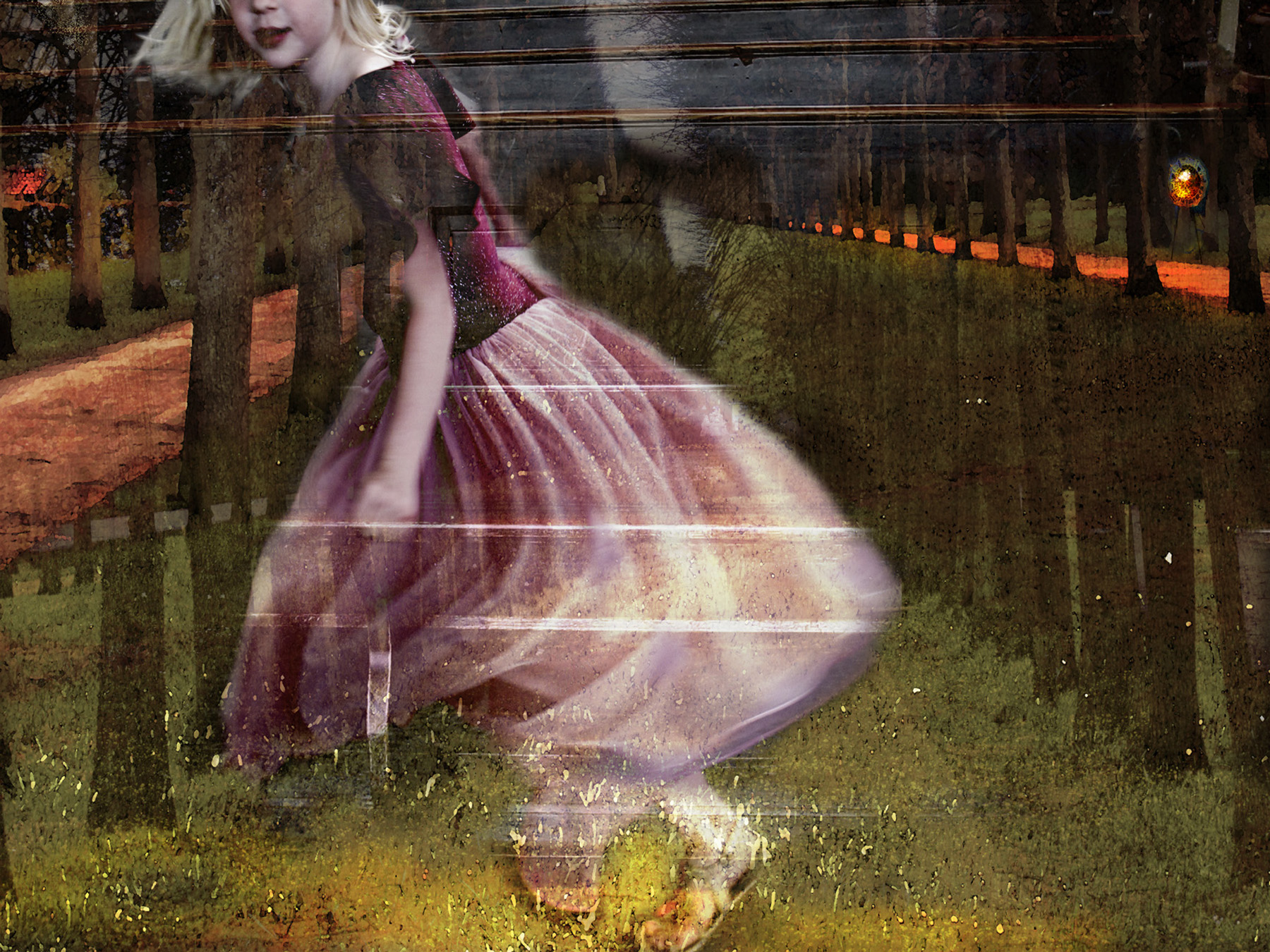Today’s images were made by a young photographer from New York City. Ben Zank was on a meteoric rise as an artist until the beginning of the pandemic. After a stretch of five years without exhibitions, as far as I know, he is now reentering the world of photography with a book of his photographs of staged compositions, performances that are enigmatic and technically exquisite. I thought the string of self-portraits in Nothing to See Here would be the perfect complement for the topic before us: an essay on self-deception by philosopher Amélie Oksenberg Rorty.

We can probably all list numerous self-deceptions that we detect in ourselves or others. They can be as trivial as thinking that the expenditure of frequent visits to a hair dresser is worth it because we now look more desirable (hah!) or as consequential as turning our eyes away from behavior that signals abuse by someone we love. They can be harmless, when we tell ourselves we are really interested in some boring activity, in order to keep someone’s affections, or they can be deadly, if we wishfully look away from physical signs that would require prompt medical attention before becoming lethal. Given that self-deceptions are not just quirks, I wanted to learn more about them.

User-friendly Self Deception, published in 1994 is a fascinating foray into a corner of moral philosophy about questions that heavily overlap with cognitive psychology, my own neck of the woods, and of course older varieties of psychoanalytic thought. I found Rorty’s essay wonderfully informative about what we need to think through when concerning ourselves with the issue of self-deception. And her writing is delicious – just look at sentences like these:
“We draw the lines between self-deception and its cousins and clones—compartmentalization, adaptive denials, repressed conflicts and submerged aggressions, false conscious- ness, sublimation, wishful thinking, suspiciously systematic errors in self-reflection….The question is: how can we sustain the illusions essential to ordinary life, without becoming self-damaging idiots? Are there forms of user-friendly self-deception that do not run the dangers that falsity, irrationality and manipulation are usually presumed to bring?”

One of Rorty’s fundamental claim is the fact that we cannot avoid self-deceptions and that they can have positive results, until a certain line is crossed. Rather than condemning them – something that I habitually do, thinking that any kind of lying, even lying to oneself, is morally objectionable and functionally disabling in the long run – she urges us to be ambivalent. We should acknowledge the value self-deception can bring to both self and communal life, but also know where to draw the life when it becomes self-harming.

The essay is structured around a discussion what self-deception is and what it is not, and what strategies we use to perfect it – a helpful tool when we try to understand how the process of deceiving ourselves unfolds. She then turns to the benefits of this psychological manipulation, both globally and locally, and eventually wonders how we can prevent self-serving strategies to become a folly with serious consequences. I will report on the key points, and leave out the philosophical frameworks which I would surely screw up, given my layperson’s extent of knowledge. Or lack thereof. You might have better luck reading the essay yourself.

Rorty defines self-deception as a species of rhetorical persuasion driving us away from rationality and transparency. Like for all forms of persuasion, the processes involved are complex, dynamic and necessitate co-operation – among the different parts of our own selves, as well as between us and our social surround. They imply various mechanisms, including perceptual, cognitive, affective and behavioral dispositions. Concretely, what we (don’t)see, where we (don’t) direct out attention, what feelings we decide (not)to allow and which actions we (don’t) take all interact to sustain the desired state of belief.
I’lI try to translate this into an example of parenting – assume you suspect your teenager to have turned to shoplifting designer clothes (or taking drugs, or stealing cars – you name it.) You don’t want to face the reality. In order to maintain your self-deception of “my daughter would never do this,” you can ignore that the kid sneaks stuff into the house, believe her lies that items are borrowed from friends, avoid inspecting the closet for new merchandise, tell yourself she has gotten a lot of tips at her summer waitressing job, and never ever join her at trips to the mall, or open her mail from the court system. Note that self-deception is not necessarily about yourself, then. It can be about the honesty of other people or some such, as well.




More often than not, this self-deception is sustained by social support. Your friends tell you, should you dare to mention your suspicion, that it can’t be, your daughter is such a good kid, or that it was a momentary lapse on her part, or a quick phase that teenagers go through, not evidence of a larger underlying problem.
Many kinds of self-deception occur within social interactions, and Rorty argues that without them “our dedications, our friendships, our work, our causes would collapse.”
“It is virtually impossible to imagine any society that does not systematically and actively promote the self-deception of its members, particularly when the requirements of social continuity and cohesion are subtly at odds with one another and with the standard issue psychology of their members. Socially induced self-deception is an instrument in the preservation of social co-operation and cohesion.“

Self-deceptions can protect us from an overload of despair, or the burden of constant skepticism, or the stress that comes with acknowledging a true rupture in personal relations, or having to give up self-harming behavior that we are addicted to.
A further benefit from deceiving ourselves can come when we pretend to have confidence or skills in order to acquire them. When the world reacts positively to our mimicry, we might find ourselves very well in position where it becomes reality. On the other hand, deceiving ourselves about the value of our roles in society, or the amount of respect we deserve, or that hierarchical systems are justified, are, of course, contributing to societal peace as well. One might ask who is paying the price, though…. (I am thinking here of the resurgence of the tradwife (traditional wife) movement and its horrifying consequences of women insisting that (economic) dependency on their partner is the best choice in life, smartly explained here.)

Rorty ends her considerations by noting that “Self-deception does not monitor its own use: it doesn’t know when or where to stop. It is specifically constructed to ignore and resist correction. The danger of self-deception lies not so much in the irrationality of the occasion, but in the ramified consequences of the habits it develops, its obduracy and its tendency to generalize.”
For each instance we have to ask the question of who eventually benefits from the manipulation and when will it be self-defeating. We have to inspect the details of our psychological contortions and be willing to ask within every context and occasion who is trying to persuade whom to what benefit within the circle of our various parts of self.
Honestly, I find that a bit unsatisfying, just as her suggestion to be mindful of the company we keep, company that might collude with and incite self-deception. For one, it seems an elitist approach – how many people have the analytic wherewithal required by such introspection? And when does a commitment to constant analyzing one’s states and motives switch over to a kind of hyper vigilance that detects fault everywhere? Feeds into narcissistic tendencies towards continual preoccupation with self? And, most importantly, If it were as easy as asking ourselves questions and following a moral and pragmatic compass, why are the habits so damn entrenched? Any suggestions?

Music today is about the self-deceptions around departed loved ones….






























































































































































































